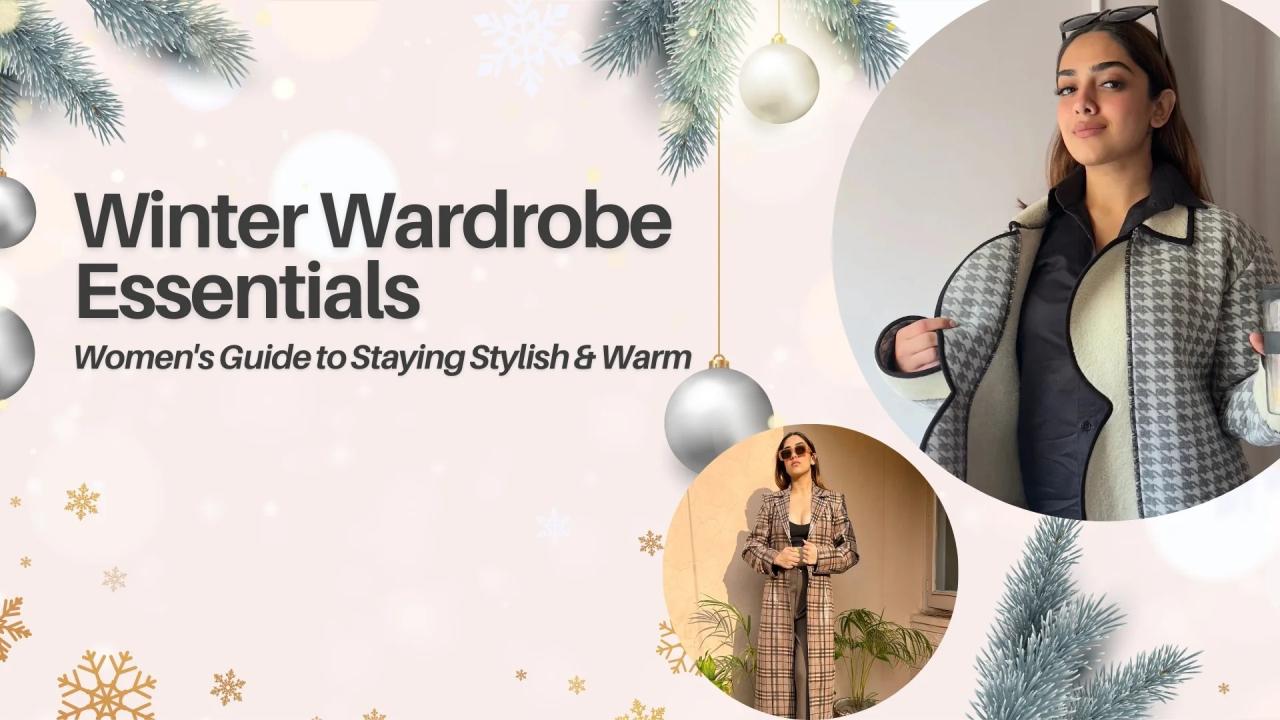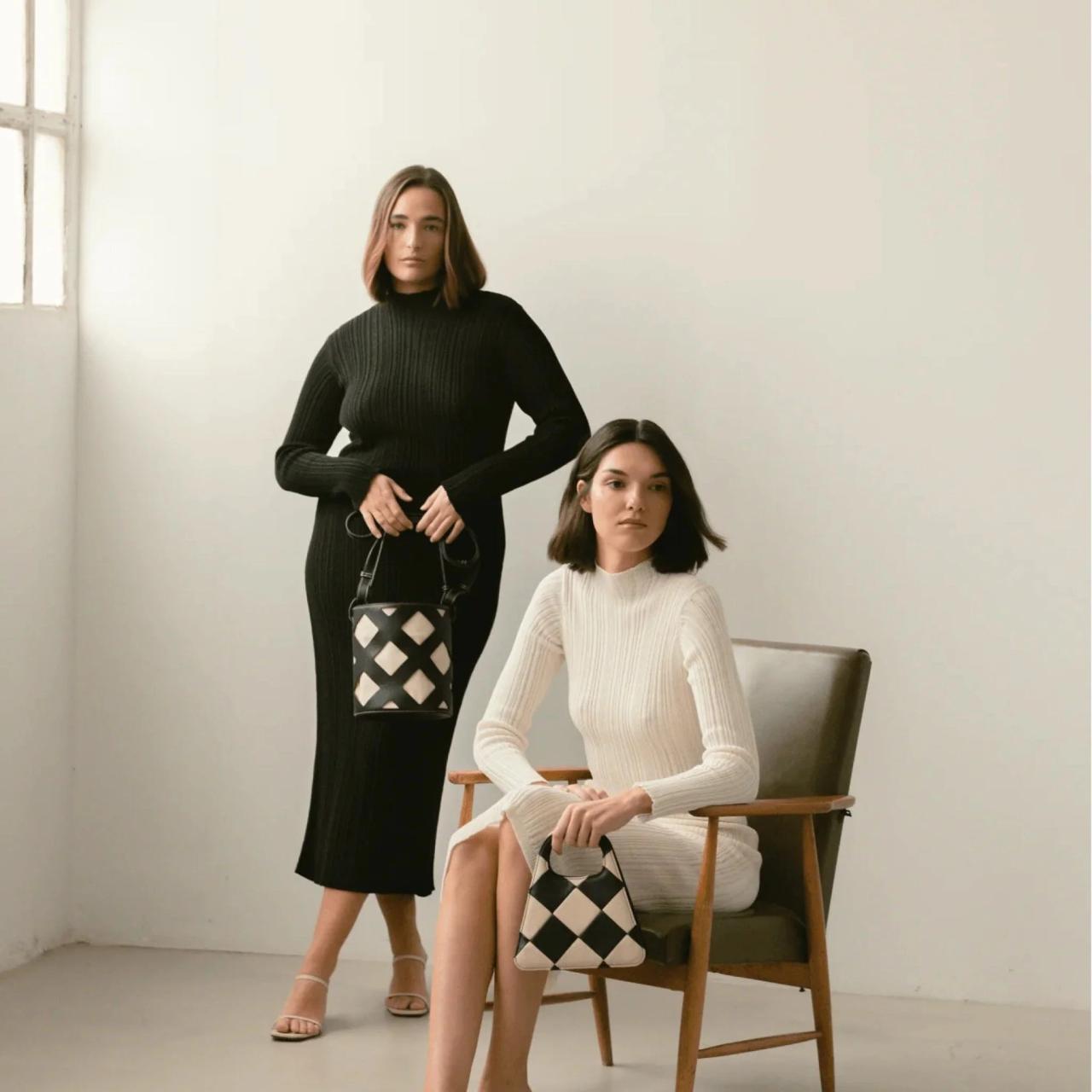Outerwear Essentials
Best accessories for winter wardrobe essentials – Choosing the right outerwear is crucial for staying warm and comfortable during winter. This section will explore key features of high-quality winter coats, compare different insulation types, and delve into the various options for winter hats and gloves.
High-Quality Winter Coat Features
A high-quality winter coat prioritizes warmth, water resistance, and style. Look for features like a durable, water-resistant outer shell (ideally treated with a Durable Water Repellent or DWR finish), a substantial insulation layer (down or synthetic), a well-designed hood (ideally with fur or fleece lining), and secure closures like a zipper and storm flap. The coat should also be well-tailored for a comfortable fit that allows for layering underneath.
Down-Filled vs. Synthetic-Filled Jackets
Down-filled jackets offer exceptional warmth-to-weight ratios, making them lightweight yet incredibly insulating. However, they are less water-resistant than synthetic options and can lose their loft if wet. Synthetic-filled jackets are generally more water-resistant and dry faster, but they tend to be bulkier and less warm for the same weight.
| Feature | Down-Filled | Synthetic-Filled |
|---|---|---|
| Warmth | Excellent | Good |
| Water Resistance | Poor | Good |
| Weight | Lightweight | Heavier |
| Drying Time | Slow | Fast |
Types of Winter Hats
Different hats offer varying levels of warmth and protection. Beanies provide basic warmth and are versatile, trapper hats offer maximum warmth and protection for the ears and face, and earmuffs are ideal for protecting only the ears in milder conditions.
Winter Glove Comparison
| Type | Warmth | Durability | Water Resistance |
|---|---|---|---|
| Leather | Moderate | High | Moderate (depending on treatment) |
| Wool | Good | Moderate | Low |
| Fleece | Good | Moderate | Low |
Accessories for Enhanced Warmth: Best Accessories For Winter Wardrobe Essentials

Layering clothing, thermal underwear, and appropriate scarves are key components of staying warm during winter. This section will elaborate on these aspects and provide examples of essential accessories for winter commutes.
Layering for Optimal Warmth
Layering creates insulating air pockets that trap heat. A typical layering system consists of a base layer (thermal underwear), a mid-layer (fleece or sweater), and an outer layer (waterproof and windproof jacket). For example, for skiing, you might layer thermal leggings and a long-sleeve thermal top, followed by fleece pants and a fleece jacket, and finally, ski pants and a waterproof ski jacket.
The Importance of Thermal Underwear
Thermal underwear, also known as base layers, is designed to wick away moisture from the skin, keeping you dry and preventing heat loss. Materials like merino wool and synthetic blends are excellent choices for thermal underwear.
Types of Scarves
Wool scarves provide excellent warmth, cashmere scarves offer luxurious warmth and softness, and silk scarves add a touch of elegance while providing some warmth.
Essential Accessories for Winter Commuting
- Warm hat: Protects your head from cold and wind.
- Gloves or mittens: Keep your hands warm and dry.
- Scarf: Protects your neck and face from the elements.
- Waterproof boots: Keep your feet dry and warm.
- Water-resistant backpack: Protects your belongings from snow and rain.
Footwear and Sock Selection
Proper footwear and socks are essential for maintaining warmth and comfort in winter. This section covers the selection and care of winter boots and socks.
Types of Winter Boots
Winter boots vary in their level of waterproofing, insulation, and traction. Consider features like a waterproof membrane (e.g., Gore-Tex), thick insulation (e.g., down or synthetic), and a rugged outsole with good grip. Examples include insulated hiking boots for outdoor activities and waterproof ankle boots for everyday wear.
Choosing the Right Socks
Wool and merino wool socks are ideal for winter boots because they are warm, moisture-wicking, and naturally odor-resistant. Avoid cotton socks, as they retain moisture and can make your feet cold and uncomfortable.
Winter Boot Care
To extend the life of your winter boots, clean them regularly with a soft brush and mild soap, apply a waterproofing spray periodically, and store them in a cool, dry place when not in use. Allow them to dry completely after use to prevent mold and mildew.
Ideal Sock Materials and Thicknesses
| Activity | Material | Thickness |
|---|---|---|
| Skiing | Merino wool | Medium to Thick |
| Walking | Wool blend | Medium |
| Everyday wear | Merino wool or synthetic blend | Light to Medium |
Stylish Winter Accessories
Winter accessories can elevate a basic outfit and add a touch of personal style. This section explores trendy accessories and how to incorporate them effectively.
Five Trendy Winter Accessories
Five trendy winter accessories that can elevate a basic winter outfit include a chunky knit scarf, a stylish beanie, leather gloves, a statement belt, and a fashionable handbag.
Incorporating Textures and Colors, Best accessories for winter wardrobe essentials
Mixing textures (e.g., chunky knit scarf with a smooth leather jacket) and using complementary colors can create visually appealing outfits. For example, a navy blue coat paired with a cream-colored scarf and brown leather boots creates a sophisticated and stylish look.
Choosing Accessories to Complement Coats
Accessories should complement the style and color of your winter coat. A long, elegant coat pairs well with a delicate scarf and gloves, while a shorter, more casual coat looks great with a chunky knit scarf and mittens.
Stylish Winter Outfit Example
Imagine a stylish winter outfit consisting of a charcoal gray wool coat, a cream-colored chunky knit scarf, dark brown leather gloves, dark wash jeans, and brown ankle boots. The neutral color palette is balanced by the textural contrast between the smooth wool coat and the chunky knit scarf, creating a sophisticated and comfortable winter look.
Practical Winter Accessories
Beyond style, practical accessories enhance safety and convenience during winter. This section focuses on high-quality umbrellas, winter bags, hand and foot warmers, and organizing a winter essentials bag.
High-Quality Winter Umbrella
A high-quality winter umbrella should be sturdy enough to withstand strong winds, have a water-resistant canopy, and offer a comfortable grip. Features like a reinforced frame and a vented canopy can improve its durability and wind resistance.
Winter-Specific Backpack or Bag
A winter-specific backpack or bag should be water-resistant or waterproof to protect belongings from snow and rain. Insulation can help keep sensitive items, like electronics, from freezing. Consider features like padded straps and multiple compartments for organization.
Hand and Foot Warmers

Disposable hand and foot warmers provide instant warmth and are ideal for outdoor activities or cold commutes. They are activated by exposure to air and generate heat through an exothermic chemical reaction. Reusable hand and foot warmers are also available and can be heated in boiling water or a microwave.
Well-Organized Winter Essentials Bag
Imagine a well-organized winter essentials bag with a main compartment containing a water bottle, snacks, and a first-aid kit. A separate, easily accessible pocket holds hand and foot warmers. A side pocket might contain gloves and a hat, while another contains lip balm and hand sanitizer. The bag itself is a durable, water-resistant backpack with padded straps.
Closing Notes
Mastering the art of winter dressing is about finding the perfect balance between warmth, style, and practicality. By understanding the key features of winter essentials and selecting the right accessories, you can create a winter wardrobe that is both functional and fashionable. Remember, the key to staying warm and looking great is thoughtful layering, appropriate footwear, and carefully chosen accessories that complement your personal style and protect you from the elements. Embrace the winter season with confidence and style!
